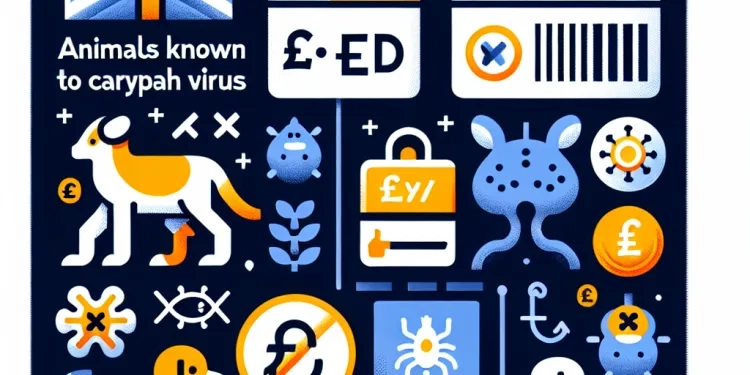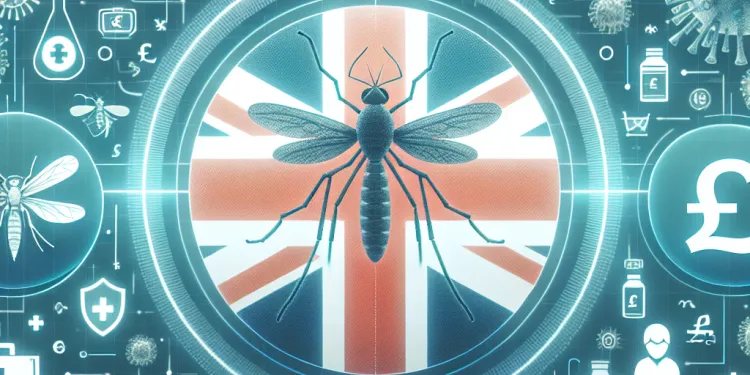
Find Help
More Items From Ergsy search
-

What role do fruit bats play in Nipah Virus transmission?
Relevance: 100%
-

How is Nipah Virus transmitted?
Relevance: 67%
-

What is Nipah Virus?
Relevance: 65%
-

Which animals are known to carry Nipah Virus?
Relevance: 62%
-

Is there a cure for Nipah Virus?
Relevance: 61%
-

Can Nipah Virus cause outbreaks?
Relevance: 60%
-

What regions are most at risk for Nipah Virus outbreaks?
Relevance: 59%
-

Why are Nipah Virus outbreaks considered a public health concern?
Relevance: 56%
-

Can Nipah Virus be transmitted from person to person?
Relevance: 56%
-

What preventive measures can reduce the risk of Nipah Virus infection?
Relevance: 55%
-

How is Nipah Virus controlled during outbreaks?
Relevance: 48%
-

Can Nipah Virus cause neurological complications?
Relevance: 48%
-

What should someone do if they suspect Nipah Virus infection?
Relevance: 46%
-

What global organizations are involved in Nipah Virus research?
Relevance: 44%
-

Where was Nipah Virus first identified?
Relevance: 41%
-

How is Nipah Virus diagnosed?
Relevance: 41%
-

Has a vaccine been developed against Nipah Virus?
Relevance: 40%
-

What are the symptoms of Nipah Virus infection?
Relevance: 38%
-

What is the mortality rate of Nipah Virus infection?
Relevance: 37%
-

How is the Marburg virus transmitted?
Relevance: 37%
-

Can Marburg virus disease be prevented?
Relevance: 36%
-

What is the Marburg Virus?
Relevance: 30%
-

Are there any countries at higher risk for Marburg virus outbreaks?
Relevance: 30%
-

What is the Ebola virus?
Relevance: 30%
-

Is the Marburg virus related to the Ebola virus?
Relevance: 30%
-

Are new variants more transmissible?
Relevance: 26%
-

How do health authorities confirm a Marburg virus outbreak?
Relevance: 26%
-

What research is being done on the Marburg virus?
Relevance: 25%
-

Where was the Marburg virus first discovered?
Relevance: 23%
-

How is the Zika virus transmitted?
Relevance: 23%
-

How is Chikungunya virus transmitted?
Relevance: 23%
-

How can healthcare workers protect themselves from Marburg virus infection?
Relevance: 23%
-

What measures are being taken to control Marburg virus outbreaks?
Relevance: 23%
-

Can Marburg virus disease recur after recovery?
Relevance: 23%
-

Has Marburg virus caused any major outbreaks?
Relevance: 22%
-

How is West Nile Virus transmitted?
Relevance: 22%
-

Are UK mosquitoes capable of transmitting Zika virus?
Relevance: 21%
-

How is blood screened to prevent disease transmission?
Relevance: 21%
-

Can Zika virus be spread from person to person in the UK?
Relevance: 21%
-

Does the UK have Zika virus?
Relevance: 21%
Introduction to Fruit Bats and Nipah Virus
Fruit bats, also known as flying foxes, are natural hosts of the Nipah virus (NiV), a zoonotic virus that can cause severe disease in both animals and humans. Understanding the role fruit bats play in the transmission of Nipah virus is crucial for controlling outbreaks and protecting public health, especially in regions where these bats and the virus are endemic.
Nipah Virus Transmission and Symptoms
The Nipah virus is transmitted from animals to humans primarily through direct contact with the bodily fluids of infected animals or consumption of contaminated food. Infected fruit bats can shed the virus in their saliva, urine, and feces, which can contaminate food sources and the environment. When humans come into contact with these contaminated sources, they can become infected. Symptoms of Nipah virus infection in humans range from mild flu-like symptoms to severe neurological conditions and respiratory issues, often leading to death.
The Role of Fruit Bats in Nipah Virus Ecology
Fruit bats, specifically those belonging to the Pteropus genus, are vital for the ecology of the Nipah virus due to their role as natural reservoirs. These bats harbor the virus without showing symptoms of disease, allowing it to persist in the environment. The mobility and wide-ranging foraging behavior of fruit bats contribute to the spread of the virus across different geographic regions. This makes controlling the spread of Nipah virus challenging, as the bats can carry the virus over long distances.
Human Activities and Risk Factors
Human activities such as deforestation and urbanization have disrupted natural bat habitats, forcing bats to forage in areas closer to human populations. This increased contact between fruit bats and humans raises the risk of Nipah virus transmission. In many endemic regions, palm sap collection is a common practice where fruit bats are attracted to the sap containers, contaminating them with the virus. People consuming raw or fermented palm sap are at a higher risk of infection.
Prevention and Control Measures
Preventing Nipah virus transmission involves minimizing contact between fruit bats and humans. Educating local populations about the risks of consuming raw palm sap and encouraging protective measures for sap collection is crucial. Additionally, monitoring bat populations and studying their migration patterns can help in predicting and managing outbreak risks. Public health authorities are also focused on improving surveillance systems and rapid response protocols to identify and control outbreaks early.
Conclusion
Fruit bats play a critical role in the ecology and transmission of Nipah virus. Understanding this role helps in devising effective preventive measures to reduce the risk of transmission to humans. Ongoing research and monitoring are essential to develop more effective strategies to combat the spread of Nipah virus and protect human health.
Introduction to Fruit Bats and Nipah Virus
Fruit bats are also called flying foxes. They carry the Nipah virus. This virus can make animals and people very sick. Knowing how fruit bats spread the virus helps us stop outbreaks and keep people healthy, especially in places where the bats and virus live.
Nipah Virus Transmission and Symptoms
People get the Nipah virus from infected animals. This happens when they touch animal fluids or eat infected food. The virus spreads from fruit bats in their spit, pee, and poop. These can get on food and places where people live. People can get sick if they touch these things. Sick people may feel like they have the flu or have more serious health problems. Sometimes, people can die from it.
The Role of Fruit Bats in Nipah Virus Ecology
Fruit bats help the Nipah virus survive. These bats, called Pteropus, carry the virus but do not get sick. The virus stays in the environment because of them. Bats fly long distances, which spreads the virus to new places. This makes it hard to stop the virus from spreading.
Human Activities and Risk Factors
Humans are cutting down trees and building cities. This changes where bats live, bringing them closer to people. When this happens, the virus spreads easier. In some places, people collect a drink called palm sap. Bats can get to the sap and leave the virus there. People who drink this sap can get sick.
Prevention and Control Measures
To stop the Nipah virus, we need to keep bats and people apart. Educating people about not drinking raw palm sap is important. Covering sap containers can help. Watching where bats go and live helps us stop outbreaks. Health workers need to know quickly when the virus appears so they can act fast.
Conclusion
Fruit bats spread the Nipah virus. Learning more about their role helps us stop the virus from making people sick. Research and tracking are very important to protect everyone from the Nipah virus.
Frequently Asked Questions
What is the Nipah virus?
Nipah virus is a zoonotic virus transmitted from animals to humans and can also be transmitted through contaminated food or directly between people. It causes a range of illnesses, from asymptomatic infection to acute respiratory illness and fatal encephalitis.
Which animals are natural hosts of the Nipah virus?
Fruit bats, also known as flying foxes, are considered the natural hosts of the Nipah virus.
Do fruit bats show symptoms of Nipah virus infection?
Fruit bats (Pteropus species) generally do not show symptoms of the Nipah virus infection and serve as reservoir hosts.
How do fruit bats transmit the Nipah virus to humans?
Fruit bats can transmit the virus to humans through their saliva, urine, or feces contaminating food items or water sources.
What type of food items are commonly contaminated by fruit bats?
Date palm sap collected from trees, fruits, and other food items exposed to bats, are common sources of contamination.
Why are fruit bats referred to as reservoir hosts of Nipah virus?
Fruit bats are called reservoir hosts because they harbor the virus without showing illness and can spread it in the environment.
Can Nipah virus be transmitted directly from fruit bats to humans?
Yes, direct transmission can occur if humans come into contact with bat fluids or secretions in contaminated food or through other environmental exposures.
Are there other animals involved in the transmission of Nipah virus?
Pigs can act as intermediate hosts, and close contact with infected pigs can lead to human transmission.
How was the Nipah virus first identified?
Nipah virus was first identified in 1999 during an outbreak among pig farmers in Malaysia, where pigs were the intermediate hosts.
Is there a season when Nipah virus transmission is more likely?
Nipah virus outbreaks often show a seasonal pattern, correlating with fruit harvests or other times when human exposure to bats is increased.
What prevention measures can reduce the risk of Nipah virus transmission from fruit bats?
Preventing contamination of food sources by bats, such as covering date palm sap collection sites, and avoiding consumption of potentially contaminated fruits are key measures.
Are there specific regions where Nipah virus transmission from fruit bats is more prevalent?
Nipah virus transmission is more prevalent in regions of South and Southeast Asia where fruit bats are common and human-bat interactions occur.
Can human-to-human transmission of Nipah virus occur?
Yes, human-to-human transmission can occur through close contact with the bodily fluids of infected individuals.
Why do fruit bats not get sick from Nipah virus?
Fruit bats have a unique immune system that allows them to carry and spread the Nipah virus without becoming ill.
What are typical habitats for fruit bats that serve as Nipah virus reservoirs?
Fruit bats typically inhabit tropical and subtropical regions, including forests, swamps, and urban areas where they can find fruit trees.
Is there a vaccine against Nipah virus for humans or animals?
As of now, there is no licensed vaccine for Nipah virus, although research is ongoing to develop vaccines for both humans and animals.
How can surveillance help in controlling Nipah virus spillover from fruit bats?
Surveillance of fruit bat populations and their interactions with humans can help predict and prevent outbreaks by identifying potential spillover events early.
What should travelers know about preventing Nipah virus infection?
Travelers to affected regions should avoid direct contact with bats and consumption of raw date palm sap and ensure fruits are washed and peeled.
Are there any treatments available for Nipah virus infection?
Currently, there is no specific treatment for Nipah virus infection. Supportive care is the main approach, though antiviral drugs are being researched.
What role do environmental changes play in Nipah virus transmission from fruit bats?
Environmental changes, such as deforestation and urbanization, can increase contact between fruit bats and humans, raising the risk of Nipah virus transmission.
What is the Nipah virus?
The Nipah virus is a type of germ that can make people sick. It's like a bad bug that can affect humans and animals. It can spread from person to person, and it can also come from animals like bats or pigs.
If you want to learn more about it, you can ask an adult for help or use tools like picture books or videos that explain things in simple words.
Nipah virus is a germ that can spread from animals to people. People can also get it from eating spoiled food or from other people who have it. It can make you sick in different ways. Some people might not feel sick at all. Others might have problems breathing or get very sick with a brain fever that can be deadly.
Which animals carry the Nipah virus?
Nipah virus is found in some animals. These animals can spread the virus to others.
- Bats: Bats carry the Nipah virus. They are often called fruit bats or flying foxes.
- Pigs: Pigs can also get and spread Nipah virus.
If you want to learn more, you can use pictures or videos. These tools can help you understand better.
Fruit bats are big bats with wings, and they are also called flying foxes. These bats can have a germ called Nipah virus.
Do fruit bats get sick from Nipah virus?
Fruit bats (Pteropus species) usually don't get sick from the Nipah virus. They carry the virus but are not affected by it.
How do fruit bats spread the Nipah virus to people?
Fruit bats can make people sick with the Nipah virus. Here's how it happens: 1. **Fruit Bats and Fruit**: Fruit bats like to eat fruit. Sometimes they drop fruit or leave it behind after taking a bite. 2. **Passed by Food or Water**: If a person eats fruit that a bat has eaten or touched, the person can get the virus. People can also get the virus if they drink water that a bat has used, like from a pond or a well. 3. **Touching Bat Poop or Pee**: The virus is also in the bats' poop and pee. If people touch this by accident and then touch their mouth or face, they can catch the virus. To stay safe, people should: - Wash fruit before eating. - Avoid eating fruit that was bitten by animals. - Wash hands often with soap and water. Tools to help: - Use picture cards to remember safety steps. - Watch videos about fruit bats and the virus for more help.Fruit bats can spread the virus to people. This can happen if their spit, pee, or poo gets on food or in water.
What foods can fruit bats make dirty?
Fruit bats can sometimes make foods dirty. Here are some foods to be careful with:
- Fruits
- Vegetables
To stay safe, wash fruits and vegetables before eating them.
Sap from date palm trees, fruits, and other foods that bats touch can spread germs.
Why do we call fruit bats 'reservoir hosts' for the Nipah virus?
Fruit bats can carry the Nipah virus without getting sick. This means they hold the virus inside them.
When we say 'reservoir host', it means they keep the virus alive and can spread it to other animals or people.
Helpful tools: Use pictures of fruit bats and the virus to understand better.
Try reading with a helper or using reading apps to make it easier.
Fruit bats are called reservoir hosts because they carry the virus but do not get sick. They can spread the virus in their surroundings.
Can people catch Nipah virus from fruit bats?
Yes, people can get Nipah virus from fruit bats. The bats can carry the virus, and people can catch it if they touch things that bats have touched. It's important to be careful and stay away from areas where bats live.
To help understand better, use pictures or videos about fruit bats and viruses. Asking for help from a carer or teacher can also make learning easier.
Yes, people can get germs from bats. This can happen if someone touches bat pee, poop, or spit. Germs can also spread if food or the environment has bat germs on it.
Do other animals help spread the Nipah virus?
Pigs can carry germs that make people sick. Being near sick pigs can make people catch these germs too.
How Did We Find Out About the Nipah Virus?
The Nipah virus was first found when people and animals got very sick. Doctors and scientists worked together to find out why. They used special tools and tests to figure it out.
If you have trouble reading, you can:
- Ask someone to read with you.
- Use audiobooks to hear the information.
- Look at pictures or videos about the Nipah virus to help understand better.
The Nipah virus was first found in 1999. It started when pig farmers in Malaysia got sick. The pigs were carrying the virus.
When is Nipah virus more likely to spread?
Nipah virus outbreaks happen at certain times of the year. They often happen when fruit is being picked, or when people are around bats more than usual.
How can we stop fruit bats from spreading Nipah virus?
Here are some simple ways to keep safe:
- Keep fruit and water away from places where bats are found.
- Wash fruit well before eating.
- Avoid drinking raw palm juice.
- Use nets to keep bats away from fruit trees.
If you need help, ask a grown-up or use picture guides to understand better.
To keep food safe from bats, we can cover places where we collect date palm sap. It's also a good idea not to eat fruits that might be dirty or touched by bats.
Where do fruit bats spread Nipah virus the most?
Nipah virus can spread from fruit bats to people in some areas more than others. Want to know where? Use tools like maps or pictures to see these places. Ask someone to help explain or use simple words to understand better.
The Nipah virus spreads more in South and Southeast Asia. This is because there are many fruit bats, and people are often near them.
Can people spread Nipah virus to each other?
Yes, people can spread the illness to other people. This can happen when they are close to someone who is sick and come into contact with their body fluids.
Why don't fruit bats get sick from Nipah virus?
Fruit bats can carry the Nipah virus, but they do not get sick from it. Scientists think this happens because fruit bats' bodies are special. Bats' bodies can fight off the virus without getting sick.
If you are reading this and need help, try using a dictionary to understand hard words. You can also ask someone to read with you and explain. Highlighting important words can make it easier to remember.
Fruit bats have special body defenses. This is why they can have the Nipah virus and not get sick. But they can still spread the virus to others.
Where do fruit bats live that carry the Nipah virus?
Fruit bats live in warm places. They like tropical and subtropical areas. You can find them in forests, swamps, and cities. They like places with fruit trees.
If reading is tricky, you can use helpful tools like audiobooks or apps that read text out loud.
Is there a Nipah virus vaccine for people or animals?
Right now, there is no vaccine for Nipah virus. Scientists are working hard to make a vaccine for people and animals.
How can watching animals help stop Nipah virus from spreading from fruit bats?
Watching fruit bats and how they mix with people can help stop diseases before they spread.
How can travelers stay safe from Nipah virus?
People going to places with the virus should stay away from bats and should not eat raw date palm sap. Make sure to wash and peel fruits before eating them.
Can doctors help if you get sick from Nipah virus?
Right now, there is no special medicine to cure the Nipah virus. Doctors help by taking care of the sick person. Scientists are looking for medicines to fight the virus.
How do changes in the environment help spread Nipah virus from fruit bats?
Changes in the environment can affect how the Nipah virus spreads from fruit bats to people.
This can happen if trees are cut down or if there are fewer places for bats to live. It might also happen if bats have to look for new food sources.
When this happens, bats might come closer to where people live. This can make it easier for the virus to spread.
To understand better, people can use pictures or videos. Talking with someone who knows about these things can help too.
When we cut down lots of trees or build cities, people and fruit bats come closer together. This can make it easier for the Nipah virus to spread from bats to people.
Useful Links
- Ergsy carfully checks the information in the videos we provide here.
- Videos shown by Youtube after a video has completed, have NOT been reviewed by ERGSY.
- To view, click the arrow in centre of video.
- Most of the videos you find here will have subtitles and/or closed captions available.
- You may need to turn these on, and choose your preferred language.
- Go to the video you'd like to watch.
- If closed captions (CC) are available, settings will be visible on the bottom right of the video player.
- To turn on Captions, click settings .
- To turn off Captions, click settings again.
More Items From Ergsy search
-

What role do fruit bats play in Nipah Virus transmission?
Relevance: 100%
-

How is Nipah Virus transmitted?
Relevance: 67%
-

What is Nipah Virus?
Relevance: 65%
-

Which animals are known to carry Nipah Virus?
Relevance: 62%
-

Is there a cure for Nipah Virus?
Relevance: 61%
-

Can Nipah Virus cause outbreaks?
Relevance: 60%
-

What regions are most at risk for Nipah Virus outbreaks?
Relevance: 59%
-

Why are Nipah Virus outbreaks considered a public health concern?
Relevance: 56%
-

Can Nipah Virus be transmitted from person to person?
Relevance: 56%
-

What preventive measures can reduce the risk of Nipah Virus infection?
Relevance: 55%
-

How is Nipah Virus controlled during outbreaks?
Relevance: 48%
-

Can Nipah Virus cause neurological complications?
Relevance: 48%
-

What should someone do if they suspect Nipah Virus infection?
Relevance: 46%
-

What global organizations are involved in Nipah Virus research?
Relevance: 44%
-

Where was Nipah Virus first identified?
Relevance: 41%
-

How is Nipah Virus diagnosed?
Relevance: 41%
-

Has a vaccine been developed against Nipah Virus?
Relevance: 40%
-

What are the symptoms of Nipah Virus infection?
Relevance: 38%
-

What is the mortality rate of Nipah Virus infection?
Relevance: 37%
-

How is the Marburg virus transmitted?
Relevance: 37%
-

Can Marburg virus disease be prevented?
Relevance: 36%
-

What is the Marburg Virus?
Relevance: 30%
-

Are there any countries at higher risk for Marburg virus outbreaks?
Relevance: 30%
-

What is the Ebola virus?
Relevance: 30%
-

Is the Marburg virus related to the Ebola virus?
Relevance: 30%
-

Are new variants more transmissible?
Relevance: 26%
-

How do health authorities confirm a Marburg virus outbreak?
Relevance: 26%
-

What research is being done on the Marburg virus?
Relevance: 25%
-

Where was the Marburg virus first discovered?
Relevance: 23%
-

How is the Zika virus transmitted?
Relevance: 23%
-

How is Chikungunya virus transmitted?
Relevance: 23%
-

How can healthcare workers protect themselves from Marburg virus infection?
Relevance: 23%
-

What measures are being taken to control Marburg virus outbreaks?
Relevance: 23%
-

Can Marburg virus disease recur after recovery?
Relevance: 23%
-

Has Marburg virus caused any major outbreaks?
Relevance: 22%
-

How is West Nile Virus transmitted?
Relevance: 22%
-

Are UK mosquitoes capable of transmitting Zika virus?
Relevance: 21%
-

How is blood screened to prevent disease transmission?
Relevance: 21%
-

Can Zika virus be spread from person to person in the UK?
Relevance: 21%
-

Does the UK have Zika virus?
Relevance: 21%


